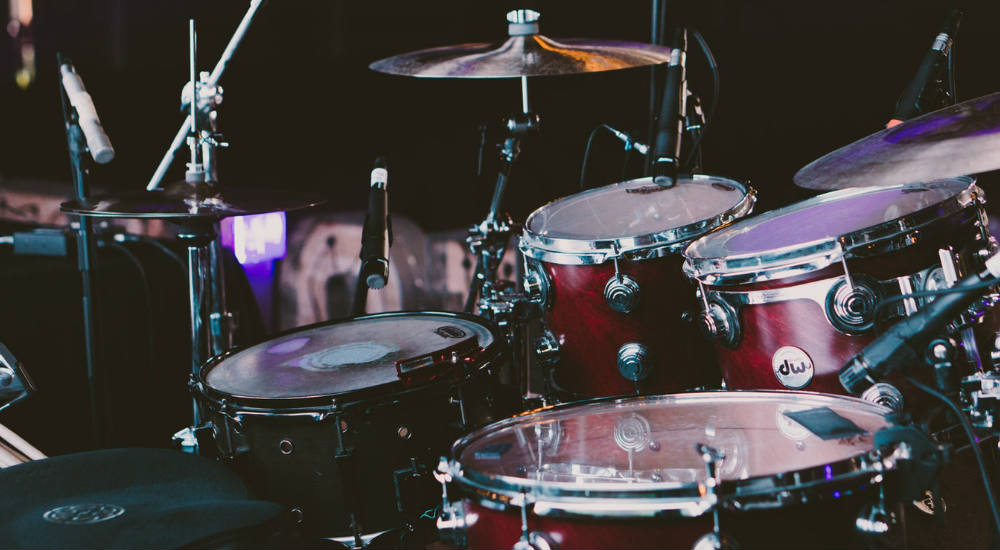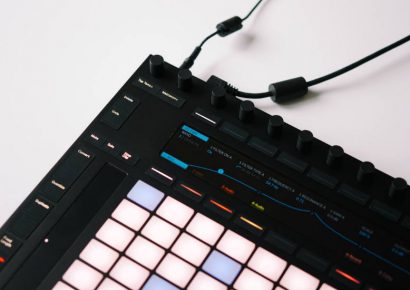The ostinato (repeated pattern) is very simple in theory. Figure A shows a left foot hi-hat followed by two bass drums played as triplets. To be more correct, Dennis actually plays both the hi-hat and the left double pedal bass drum simultaneously by placing his foot across both pedals. This allows for a constant bass drum sound as well as the hats on the downbeat. If you have a double pedal you can do this—it does sound pretty cool. Otherwise, the feel created with just the hi-hat is also intriguing.

Figure B shows this ostinato (groups of three) played in a 16th note subdivision (groups of four). This creates a ‘crossing’ feel where four triplets fit in the space of three crotchets/beats. Brackets indicate this in the figure so you can see how the pattern moves. For the sake of this explanation, I’ve only provided two bars, but the theory is that you continue the pattern for as long as you can. The pattern will eventually resolve back to beat one after three whole bars.
Figures C and D demonstrate a great way to attempt to start using this idea in a musical way. A natural way to begin is to play the pattern in context of a groove by adding straight 8th hi-hats or ride cymbal and a back beat. One figure is written as a standard rock type groove and the other in half time. It’s wise to make sure these feel really comfortable before moving onto some harder ideas.
Figures E through to G show playing the three basic rudiments (singles, doubles and paradiddles) over the pattern. Single strokes are undoubtedly the best place to start here, while paradiddles with an accent on every downbeat provide a fantastic feeling phrase over the top of the shifting ostinato. You could easily take this further with any rudiment—all the other diddle rudiments, rolls, flams etc.

Obviously, you can do anything in the hands—just ask Dennis Chambers—but another idea is to add a static right hand pattern. Figures H and I show two very standard funk type hi-hat/ride variations. Once these feel comfortable, look at playing as many different rhythmic variations in the left hand on the snare, toms etc. The hands could also be reversed. The numbered rhythmic variations on the bottom line of the notation move through some initial ideas to muck around with.
The possibilities here are endless, but this concept can be applied to any foot pattern. You could reverse the hats and the bass drums, try a group of five or even seven. With the hands, you could make up any right hand hi-hat/ride pattern you like and eventually look to working through different sight-reading exercises with the left hand—Ted Reed’s Syncopation or Gary Chester’s The New Breed spring to mind here.
I’ve found that when you are really getting comfortable with this, your feet tend to be on autopilot. If you have to concentrate too hard on the actual ostinato, it’s very difficult to be musical with the hands. When moving through a new variation in the hands, spend some time just living with it until it feels comfortable. Don’t move on when you think it’s comfortable; know it is. When all is said and done, the idea is to be able to freely move between whatever phrasing you like, so improvisation is key. Make sure you check out Dennis Chambers too—you won’t regret it.

